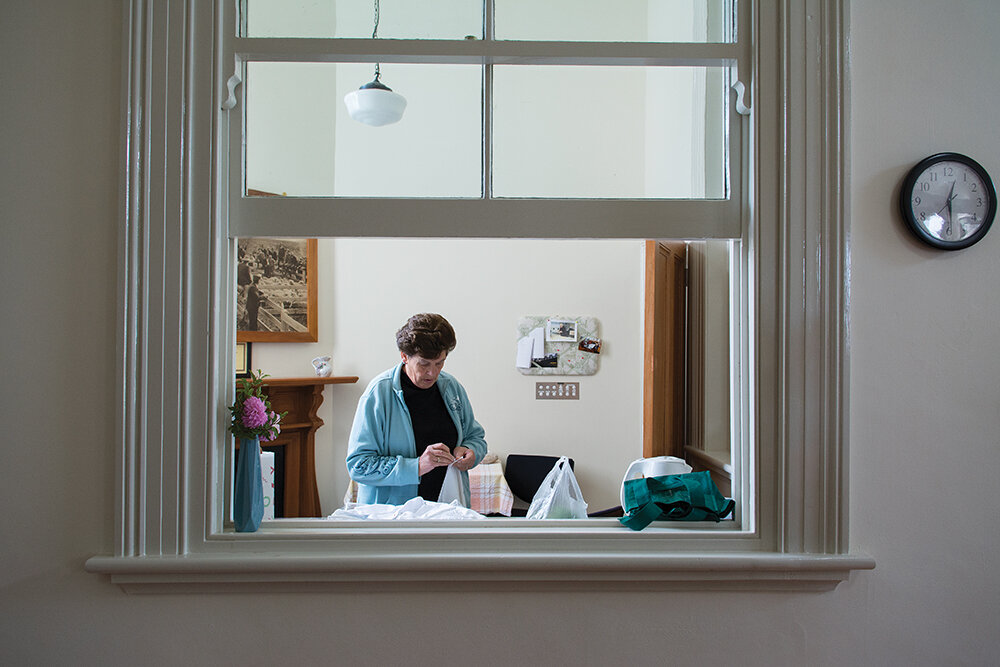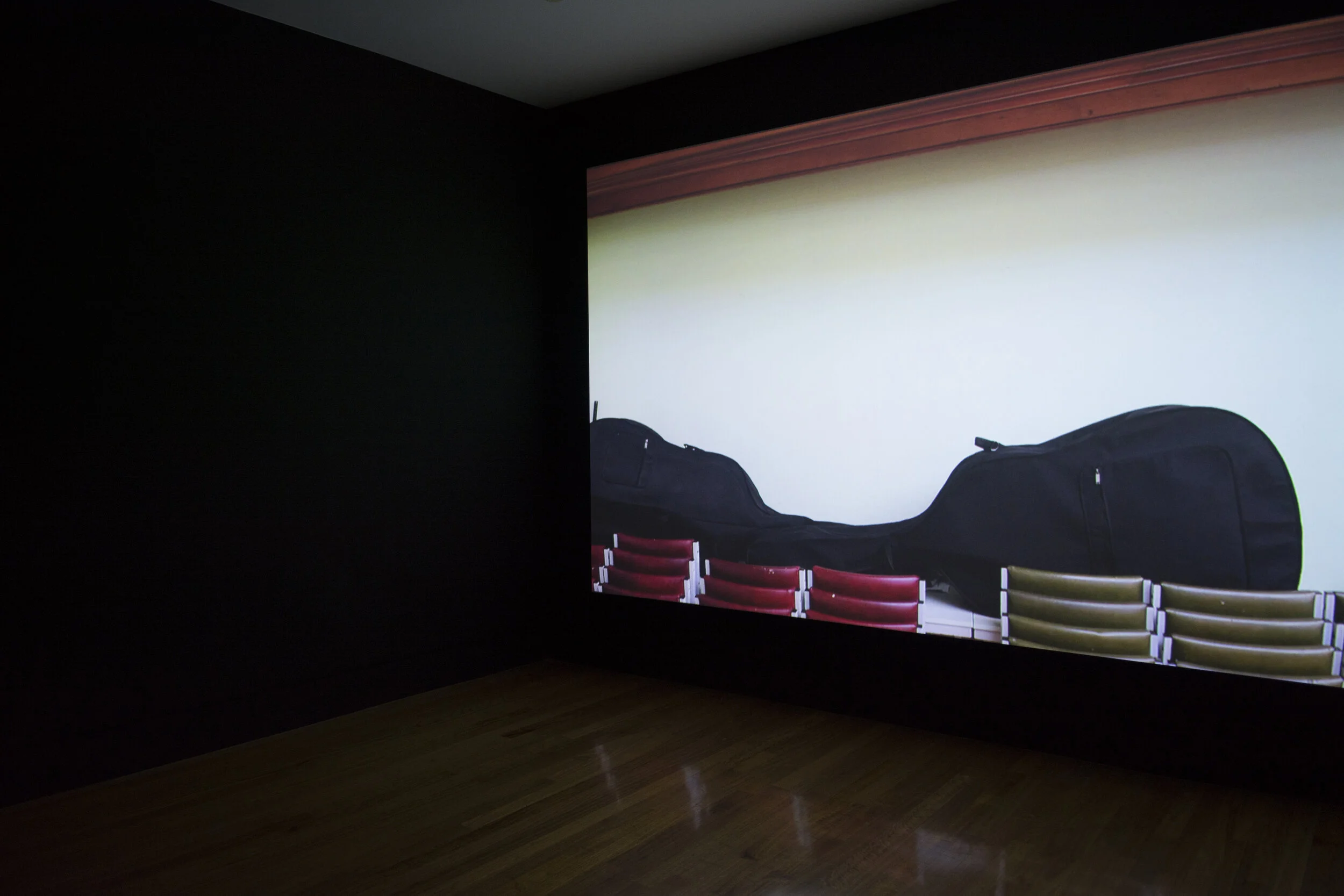As You Will
Carnegie Libraries of the South Pacific
As You Will explores the historic legacy of Carnegie Libraries in the South Pacific. Named after the successful Scottish American industrialist Andrew Carnegie, his philanthropic trust established 2,509 library buildings throughout the English-speaking world between 1886-1917.
Moving from New York City to New Zealand, Smith was intrigued to learn that what she had assumed to be a purely American institution had also established eighteen libraries around New Zealand, four in Australia and one in Fiji, between 1902 and 1916. Fascinated by the unexpected connections, Smith set out to document the legacy and changing fortunes of these once-landmark buildings.
Libraries have always fascinated Mickey Smith. One of her strongest childhood memories is of her grandfather taking her to a ‘gilded temple of magic’ – the Carnegie library in her hometown of Duluth, Minnesota. The library was one of nearly 1,700 in the USA built with donations from the industrialist and philanthropist Andrew Carnegie. An archetypal rags-to-riches robber baron, Carnegie had been born into poverty in Scotland in 1835. By 1901, when he sold his Carnegie Steel Company to J.P. Morgan for US $480 million (around US $13 billion today), he was the richest man in the world.
Carnegie’s personal experience of poverty meant he was acutely aware of the responsibilities of wealth and dismissive of those who left money to their descendants rather than encouraging them to make their own way in life. In Carnegie’s view, “The man who dies rich, dies disgraced.” He walked his talk by donating the bulk of his wealth – an estimated US $350 million – to philanthropic projects. These libraries were monuments to his belief that it was education – via free access to books – that sowed the seeds for success in life. To the communities receiving library funding, Carnegie proclaimed, “I give you the seed. Cultivate it as you will.”
Moving from New York City to New Zealand some years ago, Smith was intrigued to learn that what she had assumed to be a purely American institution had also established eighteen libraries around New Zealand, four in Australia and one in Fiji, between 1902 and 1916. Fascinated by the unexpected connections, Smith set out to document the legacy and changing fortunes of these once-landmark buildings.
At every location, Smith has combined the sensibility of a conceptual artist with the formal and technical skills of a documentary filmmaker, in order to record lovingly the everyday lives of these heritage buildings. The result is a mesmerizing and often poignant meditation on technological obsolescence, small-town politics and contradictory ideas of progress.
– I Give You the Seed by Charles Walker, 2018
For the first time in six years, I’ve boarded a plane with nothing but a weighty camera bag. Flying from Auckland to Dunedin, where it was confusingly colder. Cold down south. Autumn in April.
In my former life I would have tackled this ambitious project in one go, creating a reflective month-long residency. Instead, over three days I will document five of the Carnegie buildings, allowing a few hours in each site - Gore, Balclutha, Dunedin, Fairlie, Timaru - a new residency reality. I could leave my heroic husband with a sick child and puppy for a month, but all we can spare are three nights and four days. Work expands to the time allowed.
First stop – a curiously round building in Gore. ‘Aren’t they all this shape?’ asked the gallery attendant.
The lone visitor to the Gore library-turned-art-gallery bolted the moment he noticed my camera. Surely he was running from more than a lens. Those songs that suggest criminals disappear into Mexico? I’d flee to a sheep station in Southland. It appears empty, the way North Dakota did before oil. Aaron often welcomes overseas guests with a quip, ‘New Zealand. Where men are men and sheep are nervous.’ But what happens when the sheep and the men are nervous?
Minutes into the shoot the gallery attendant, Marie, offered a cup of tea. The American in me wanted to snatch it and get back to work, but I’ve learned one is expected to sit whilst enjoying a hot beverage. In a ceramic cup. If you must drink from a paper cup, it’s not worth drinking.
Marie recalled coming to the library as a young girl, ‘With Mum, I suppose…’ We talked of Kiwi apathy toward the consistently stunning landscape. You’re used to it, the way Minnesotans are used to snow. A given.
The walls of the gallery curved, bringing Richard Serra’s monumental plates to mind. Few patrons wandered in and out during the shoot. Photographing Gore was simple, uneventful enough to make an artist nervous too.
– Gore, Artist’s journal entry, 2015
Cultivate it as you will… NORTH, 2015. Video installation, 13:36 minutes. (Audio only until 00:44.) Includes footage from Carnegie buildings in Cambridge, Dannevirke, Marton, Onehunga and Thames. Commissioned by Te Tuhi, Auckland, New Zealand.
Cultivate it as you will… SOUTH, 2015. Video installation, 11:01 minutes. Includes footage from Carnegie buildings in Balclutha, Dunedin, Fairlie, Gore, Hokitika, Timaru and Westport. Commissioned by Te Tuhi, Auckland, New Zealand.
Earthquake Prone, Hokitika NZ, 2018. Limited edition print on paper. Edition of 25
Earthquake Prone, Hokitika NZ, 2018. Limited edition print on paper. Edition of 25


















